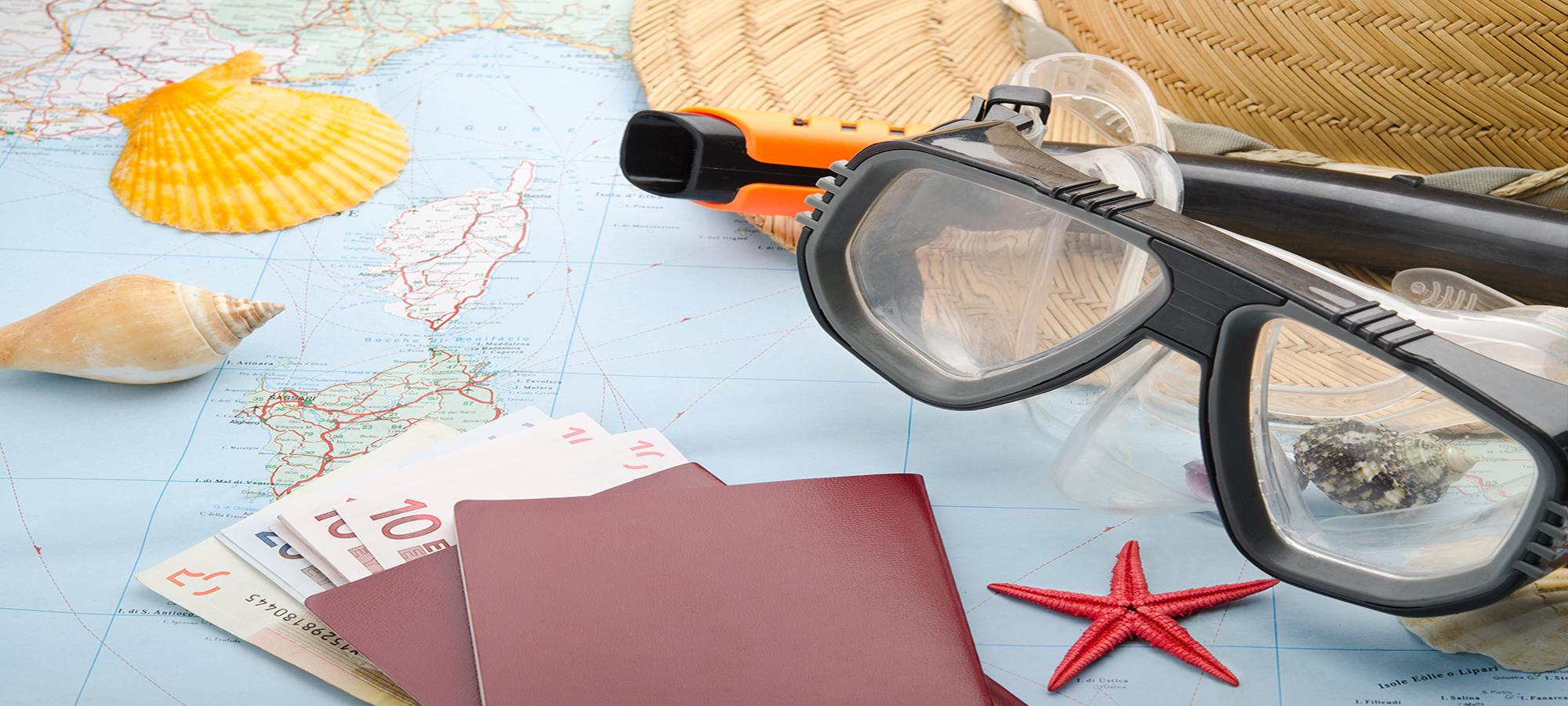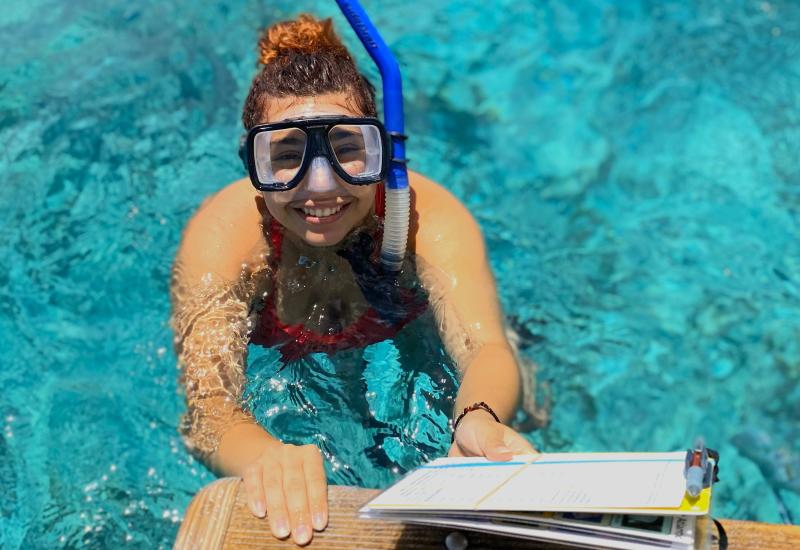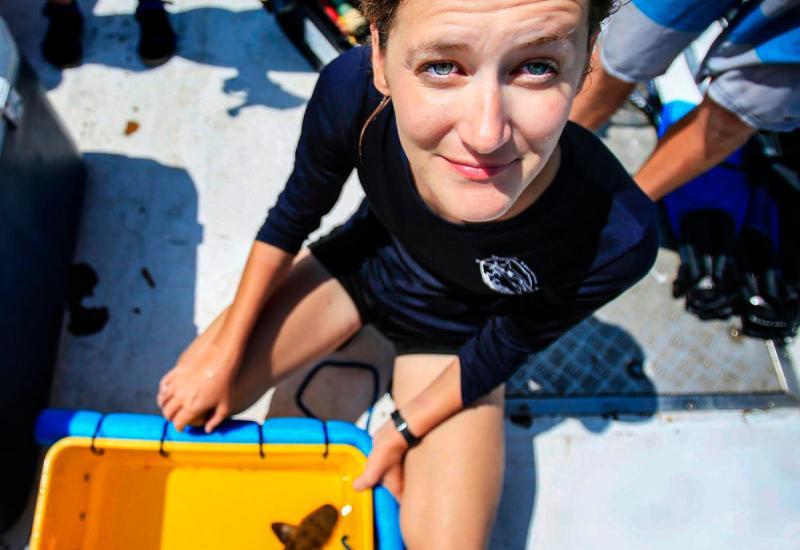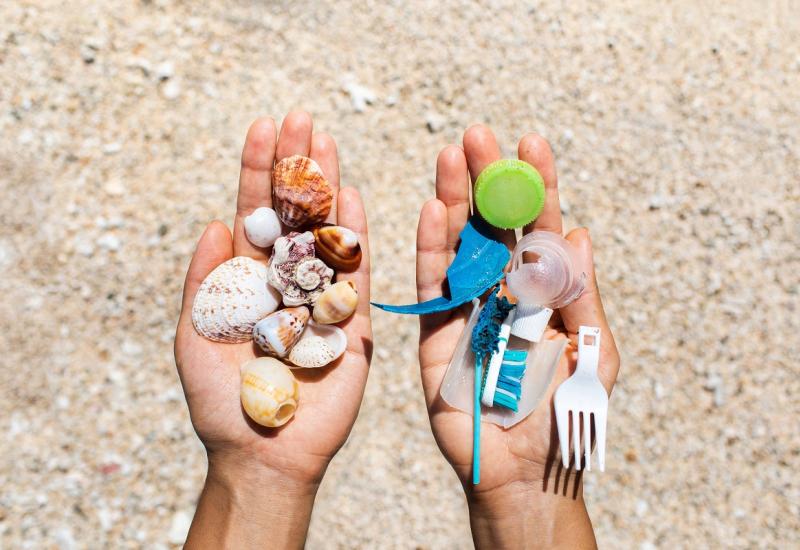20 Ways to Make Your Dive Trip More Eco-Friendly
It’s true: vacations make life better.
The same cannot be said for their effect on the planet. Flights churn through fuel while coastal hotel development accelerates erosion. And, as a trampled poppy field in California and crumbling coral in the Red Sea show, the sheer number of visitors can harm the environment.
“Everybody wants to go to the untouched paradise when they're underwater,” says Dr. Rachel Dodds, a sustainable tourism consultant and professor in the school of Hospitality and Tourism Management at Ryerson University. “But untouched paradise will only stay lovely if we protect it.”
To lighten your load on the planet, use these 20 tips next time you hit the road.
1. Research sustainable businesses
“One of the main things you can do is thoroughly research your destination,” says Jon Bruno, executive director of The International Ecotourism Society (TIES).
Scouting ahead lets you find hotels, operators and restaurants that have pledged to operate sustainably. Check their websites for sustainability plans or eco-tourism certifications, and be on the lookout for harmful development practices like clearing seagrass meadows in the service of pristine sand. Check out the interactive map hosted by Green Fins, a United Nations initiative to conserve coral reefs through sustainability guidelines for diving and snorkeling businesses, for environmentally-conscious dive operators.
“If a traveler chooses to have their revenue go to sustainable vendors, then you make a big difference,” Bruno says.
2. Ditch single-use plastics

Shutterstock.com/Bogdan SonjachnyjDisposable coffee cups, airline stacks, cocktail straws - skip a treat here or there to reduce your use of single-use plastics.
You may not throw your plastic water bottle, straw or grocery bag overboard—but it might end up there. Plastic is accumulating rapidly in the ocean; our seas may have more plastic than fish in just 30 years, which disrupts the diet of sea life, harms commercial and recreational fishing, and degrades beaches.
Packing a reusable water bottle and foldable coffee cup, forgoing straws in your daiquiris, skipping airplane snacks and bringing a reusable tote bag for souvenirs can all reduce the demand for single-use plastics that threaten marine life.
Visiting a country where travelers cannot drink the water makes skipping single-use plastic water bottles more complicated, but there are options. Dodds recommends a LifeStraw, which can filter water. Or, if staying in one place for several days, travelers can purchase a tank of water to refill a reusable water bottle.
3. Join a clean up dive
Take eliminating single-use plastics one step further: be a traveler that removes plastic pollution. Divers often collect litter from the ocean floor during the course of their dives, but joining forces with other divers lets you make a concerted impact. Check out PADI's Dive Against Debris Action Map to look for organized dives in your vacation destination.
4. Explore nearby
Diving within driving distance slashes your trip’s carbon footprint compared to hopping on a plane.
This is an option even if you do not live near an ocean. Give your local dive shop a ring if you are unfamiliar with the dive sites in your region. Area instructors usually dive locally and can point you toward quarries, rivers, flooded mines, lakes, and more.
5. Fly direct
Driving cannot get you everywhere. While the future of flights is hazy due to COVID-19, aim for a direct flight whenever you next book a seat. Take off and landing are the most carbon-intensive portions of the flight, says Dodds, so a direct flight burns less fuel than a connection.
6. Become a citizen scientist
You do not need a degree in marine biology for your dives to further science. Citizen science, where members of the public aid scientists with a project, is an increasingly popular way for divers to do more than sightseeing. The global smorgasbord of options includes: relocating urchins, marine life photo ID, monitoring underwater pollution, and counting sharks in Fiji.
Interested? Dive into becoming a citizen scientist.
7. Make it a camping trip
Hotel stays require heavy water and electricity usage. With hotels accounting for an estimated one percent of annual carbon emission globally, pitching a tent reduces your footprint while opening up off-the-beaten-track experiences.
8. Fight invasive species
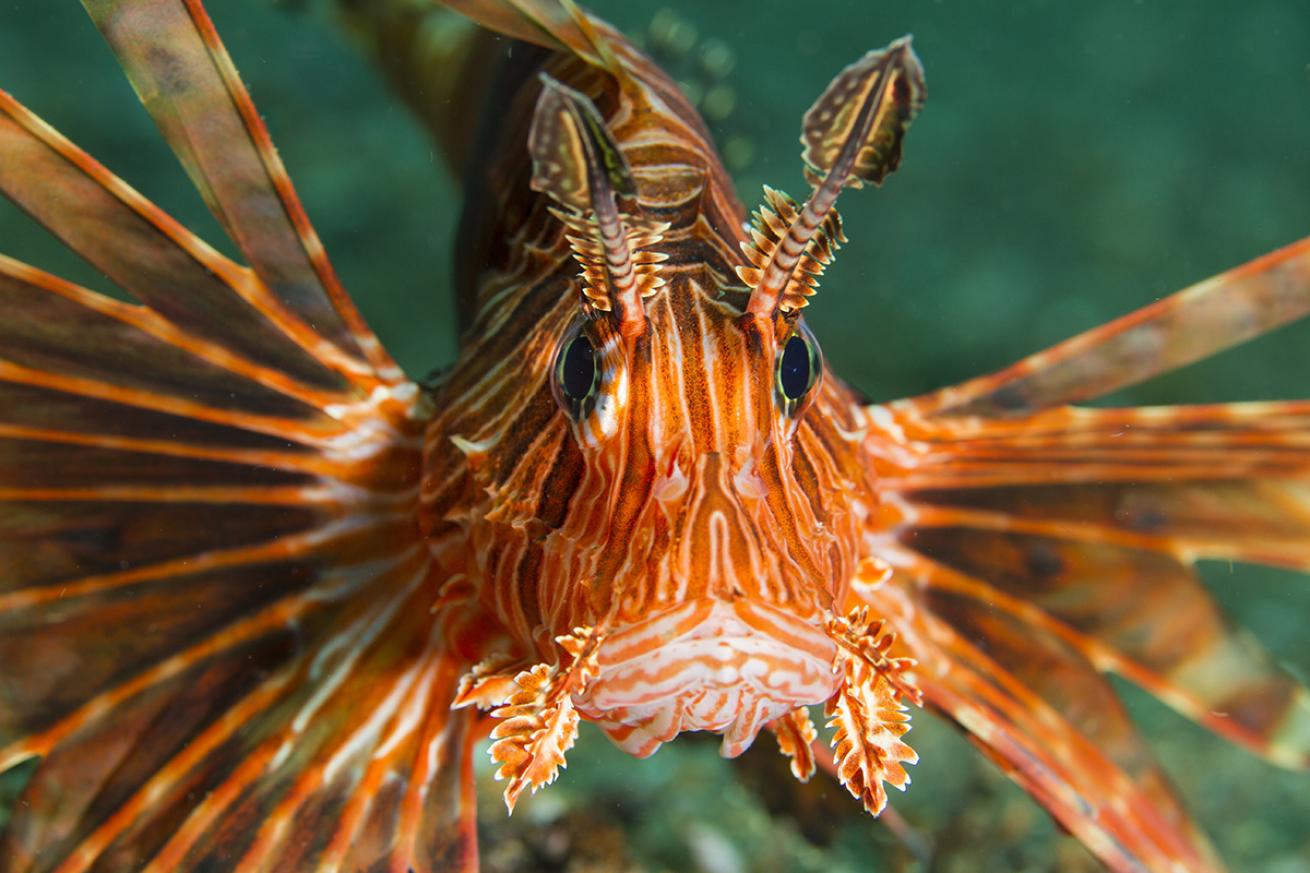
Shutterstock.com/Andy DeitschOriginally from the Indo-Pacifc region and the Red Sea, lionfish in the Caribbean are sometimes hunted for food in an attempt to reduce invasive populations.
From the European crab scuttling around Asia to zebra mussels proliferating in the Great Lakes, invasive species are destabilizing marine ecosystems globally. In the Caribbean, lionfish are out-eating and out-breeding local fish to the detriment of reefs. You can make your dive a solution by hunting invasive lionfish—which many local restaurants and resorts will happily cook for your post-dive dinner!
9. Eat and shop local
Eating local cuisine and buying souvenirs from neighborhood artisans makes sure food and trinkets are not shipped in for you at great CO2 expense. This eco-friendly move can also make your trip a more distinct experience—regional food or a novel curio touches on the destination’s individual nature that drew you to it in the first place.
10. Leave the ocean where you found it
Coral or turtle shell jewelry, shiny shells, sand collected from the shore—it may be tempting to memorialize your time under the waves by taking a piece of the ocean home. It's locally sourced, but relocating nature to our living rooms en masse harms the environment. Snapping underwater photos or supporting local artisans who paint, sculpt, or photograph their home waters are more eco-friendly ways to take the waves with you.
11. Quit cranking the A/C
Blasting the air conditioning feels great during a tropical trip, but cooling your hotel room takes energy. A lot of it. Climate control accounts for half or more of a hotel’s energy consumption. Lowering your A/C and turning it off when you are not in the room (which is most of your stay) saves energy.
“If you want your room to stay cooler, close your curtains before you go out,” suggests Dodds.
12. Use reef-safe sunscreen

Shutterstock.com/TierneyMJPick sunscreens that don't leech harmful chemicals into the water during your dive.
Sunscreen washes off in the water, where common chemicals can kill coral, harm algae and accumulate in dolphins.
Reef safe sunscreens skip the problematic ingredients. If fish-friendly brands are not sold at stores near you, the PADI Gear store sells Stream2Sea. You can also wear reusable items like a rash guard or a hat to protect your skin from the sun.
13. Pound the pavement
Walking, biking and mass transit use less carbon getting around town compared to an Uber.
“Some people get uncomfortable with this because it exposes them to the destination,” Bruno of TIES says, but “being off kilter...is what adds a nice tension to the travel that really creates a strong memory.”
14. Dive a marine protected area
Diving at a marine protected area, which is a slice of the ocean set aside for conservation, supports sustainable marine tourism.
Marine protected areas can help the ocean regenerate or protect archaeological sites like shipwrecks. These parks typically charge entrance fees used to fund the protected area. Not only do protected areas often offer divers more to see underwater than unprotected waters, diving there shows local governments that protecting the ocean draws tourism.
15. Perfect your buoyancy
Not only does great buoyancy extend your air supply, it protects the life around you. Divers with poor buoyancy can trample coral or bury reefs in sand, harming the life they want to experience. Maintaining your underwater balance avoids accelerating reef degradation.
16. Restore coral
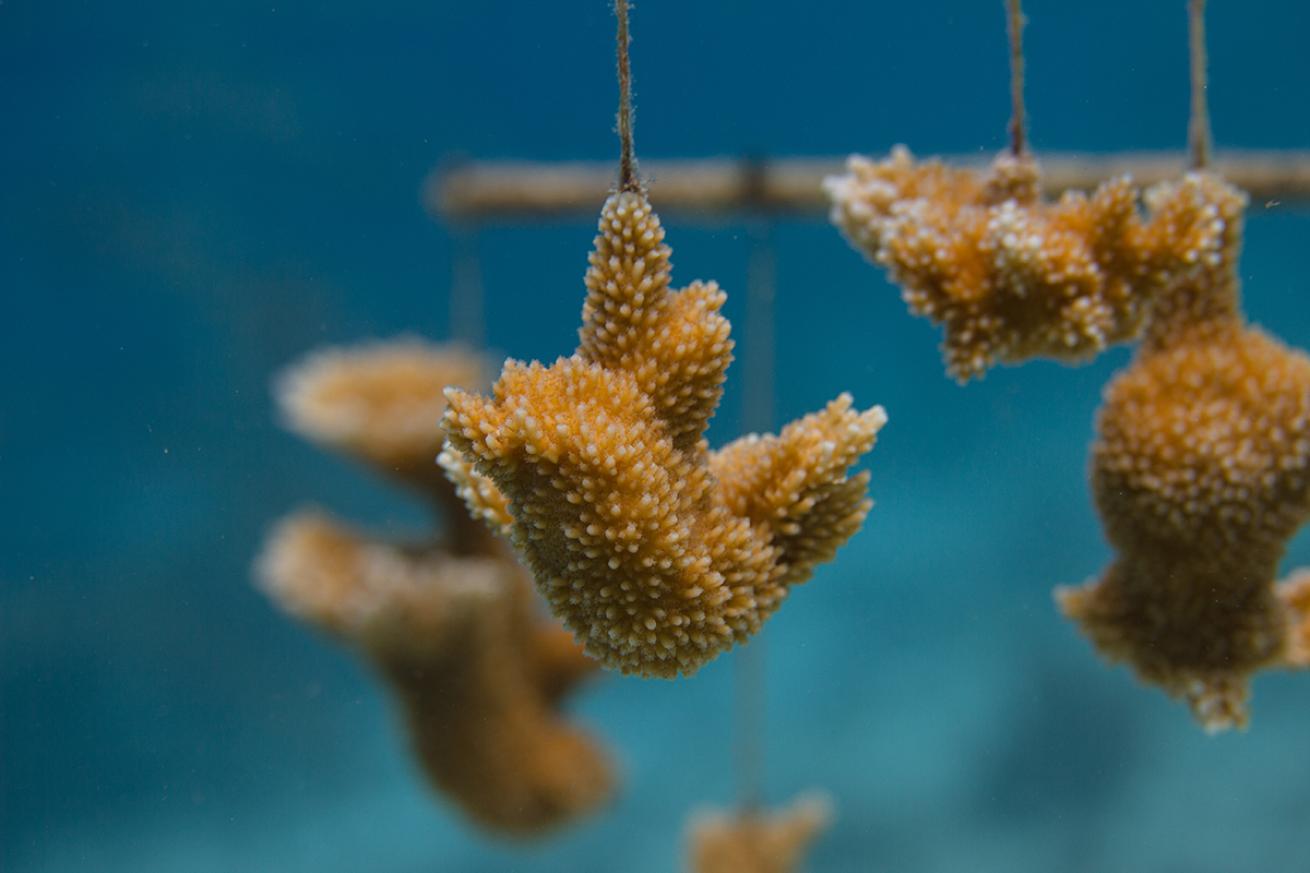
Shutterstock.com/Peter Douglas ClarkCritically endangered staghorn coral, above, hang in an underwater nursery off of Bonaire. Coral restoration initiatives are popular on the Caribbean island.
Leave the reef better than you found it with a coral restoration dive. Coral restoration operators rejuvenate reefs by nursing baby coral, planting thriving fragments on a struggling reef to re-stabilize the ecosystem. Dive operators and nonprofits around the world offer divers the opportunity to volunteer in their restoration nurseries, which research indicates can improve reef resilience.
17. Explore an under the radar destination
Mona Lisa and the Taj Mahal are not the only casualties of over tourism - it is crowding corals too.
If “you've got everybody diving at the same time on the same reef, that reef doesn't have any time to recover,” Dodds says. Visiting an under-the-radar destination or traveling somewhere off season makes your trip less stressful for the destination.
18. See something, say something
“You are the customer that those countries want,” says Dodds. “And if they want you, then you also have the pull to say, I can't believe there's no recycling here. Or I don't understand why there's no local food on the menu. Or why don't you have any water conservation in the hotel?”
During a talk at a hotel, Dodds once pointed out the single-use plastic coffee creamers on breakfast tables. “If nobody ever says anything, then nothing will change,” she told the audience.
The hotel manager received ten voicemails and 19 emails from people at the talk rallying against the single-use plastic. He permanently axed the creamers that same day.
“The impact of that over a year is actually quite huge,” she says.
19. Show and tell
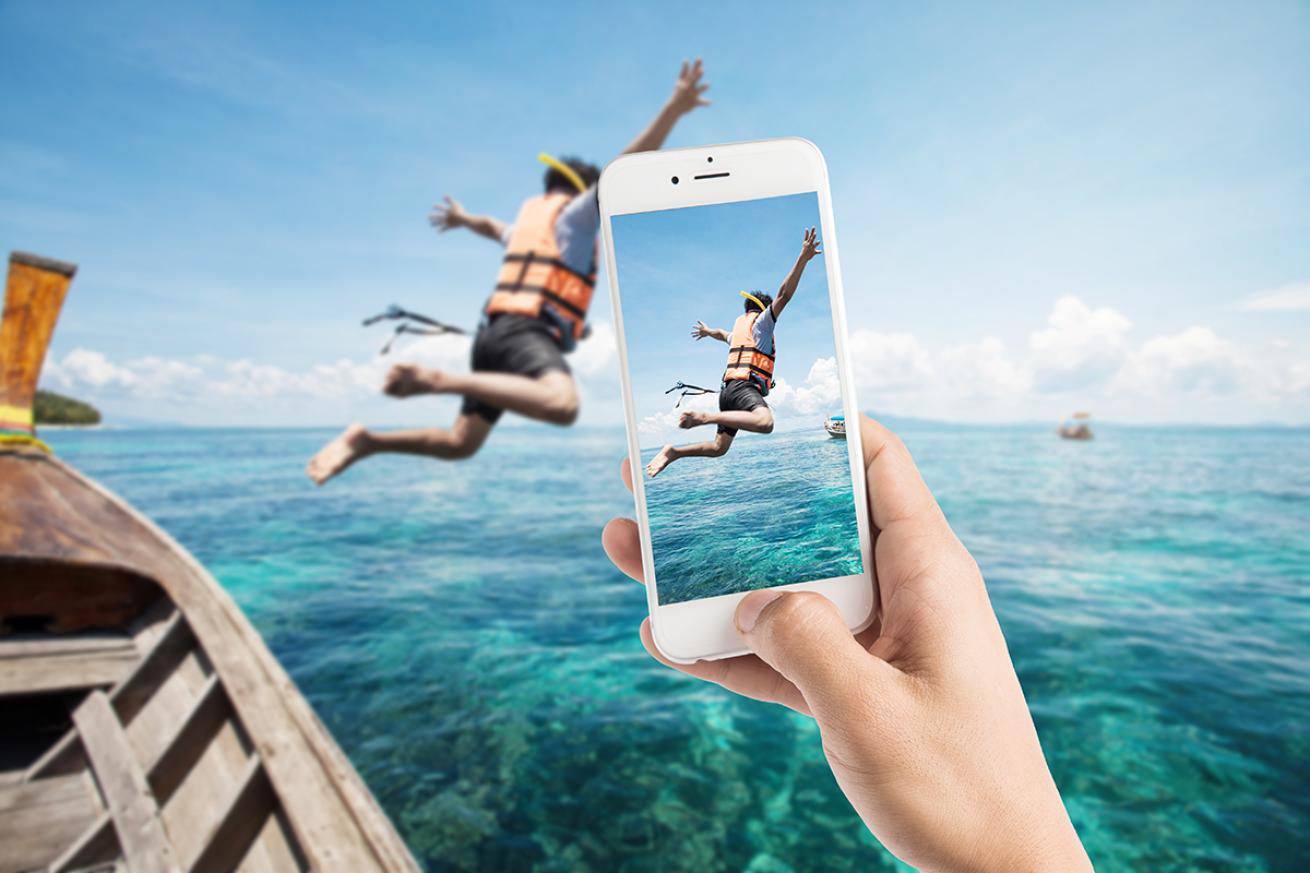
Shutterstock.com/Bon AppetitPosting about eco-travel can spread environmentally friendly tourism ideas.
Sharing vacation photos online affects your friends—nearly half of Instagram users turn to the platform to shape their travel plans.
“If you traveled in a sustainable way, that actually encourages the people in your circle to think about” doing the same, says Bruno. Divers have a particular power, he says, as the only travelers that can share what is happening in the ocean.
Did the supposedly sustainable hotel you booked rely heavily on single-use plastic? Did your dive operator go above and beyond to make sure your group gave marine life personal space? Tell your friends, family and other travelers online so your trip can inform their choices.
20. Strive for better, not perfect
Sustainability does not demand perfection. Maybe you have to fly, but you can bike around town. Perhaps you used some single-use water bottles but prioritize eating from the local market near your hotel.
“There will be cases where the most sustainable path is not available to you. And so you have to take another path,” Bruno says. “But the will and the way that you conduct yourself in those circumstances is what really creates the positive outcome.”

